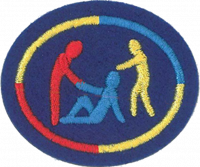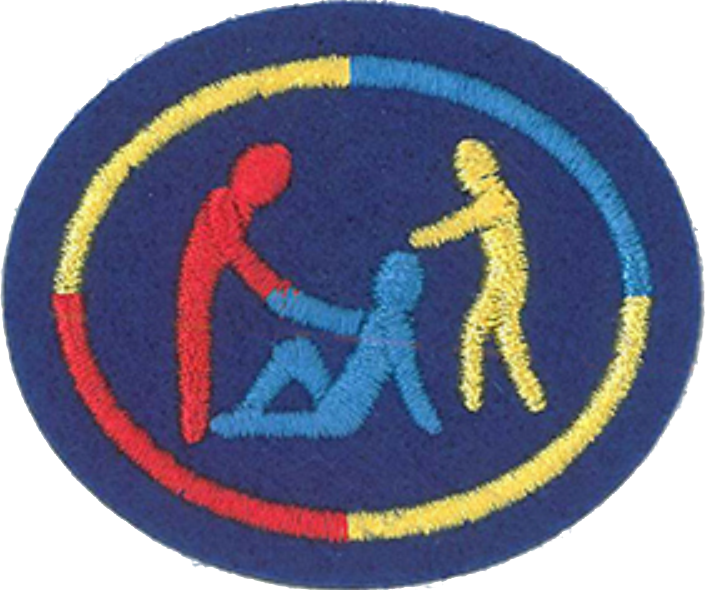Difference between revisions of "AY Honors/Bully Prevention I/Answer Key"
m (- Category of AYHAB) |
(Marked this version for translation) |
||
| Line 485: | Line 485: | ||
==References== <!--T:78--> | ==References== <!--T:78--> | ||
| + | <!--T:164--> | ||
<noinclude></translate></noinclude> | <noinclude></translate></noinclude> | ||
{{CloseHonorPage}} | {{CloseHonorPage}} | ||
Latest revision as of 22:05, 13 July 2022
Skill Level
1
Year
2018
Version
10.11.2024
Approval authority
North American Division
1
The act of bullying can be defined as repetitious behavior with the intent to cause harm against someone who has trouble defending him/herself.
"A person is bullied when he or she is exposed, repeatedly and over time, to negative actions on the part of one or more other persons, and he or she has difficulty defending himself or herself." www.teacher.org/resource/bullying/
Bullying is an intentional behavior that hurts, harms, or humiliates a student, either physically or emotionally, and can happen while at school, in the community, or online. Those bullying often have more social or physical “power,” while those targeted have difficulty stopping the behavior. The behavior is typically repeated, though it can be a one-time incident.
Students often describe bullying as when “someone makes you feel less about who you are as a person.”
Note: Definitions vary greatly. These are not legal definitions. Find your state’s law and definition at StopBullying.gov.
Bullying is different from conflict. Conflict is a disagreement between two sides, but both are able to enunciate their views/needs. To contrast:
- Conflict is a disagreement or argument in which both sides express their views.
- Bullying is negative behavior directed by someone exerting power and control over another person.
“With bullying, there is often a power imbalance between those involved, with power defined as elevated social status, being physically larger, or as part of a group against an individual. Students who bully perceive their target as vulnerable in some way and often find satisfaction in harming them.
In normal conflict, children self-monitor their behavior. They read cues to know if lines are crossed, and then modify their behavior in response. Children guided by empathy usually realize they have hurt someone and will want to stop their negative behavior. On the other hand, children intending to cause harm and whose behavior goes beyond normal conflict responses might think, ‘Cool, I have more power. This is fun! Let’s see if I can break this kid!’” (pacer.org/resources)
2
2a
Verbal bullying involves the usage of statements, phrases, or name calling to control an individual. This is often a continuous act, designed to take place on a regular basis.
2b
Physical bullying involves the use of force on their target to gain control. This may involve hitting, biting, kicking, punching, or some other form of violence. It may involve one person bigger, stronger, and more hostile than their intended target.
2c
3
Self-acceptance is the act of acknowledging your strengths and deficiencies, no matter what others think or how they view you as a person.
Self-esteem is the act of feeling a sense of satisfaction about his/her own abilities or accomplishments, which can be used as a tool to evaluate or measure his/her self-worth.
4
4a
4b
4c
4d
While we tend to discourage rote memorization in most cases, if individuals KNOW these four rules and situations in which they can be applied, then they are more able to handle situations when they encounter them. In the same way that we memorize 9-1-1 or “Stop, Drop, and Roll” so that our response is automatic, in the same way memorizing these four rules can make responses to bully situations much more positive in their outcomes.
5
This is an open question designed for self-reflection. However, research indicates the following signs (among others). Updates to this list can be easily researched online.
- A decline in academic performance
- Can experience random stomach pain or diarrhea
- Can experience issues with eating and overall appetite
- Low levels of self-esteem
- Stress
- Varying forms of depression; anxiety
- Thoughts of suicide
- Committing the act of suicide
6
A Bully Circle is a definition to help individuals understand the different roles people find themselves playing in a bully situation. Online videos for “bully circle” will assist the teacher a lot when teaching this core concept.
Person Bullying - a person(s) that exhibit bully behavior Followers - people who take part in the bully behavior, but don't usually initiate it Supporters - people who are not taking part in the bully behavior, but support it Passive Supporters - people who support it, but don't openly show it Disengaged Onlookers - people that watch, but do not act Possible Defenders - people who dislike the bully behavior, but do not act Defenders - people who actively try to stop the bully behavior Victim - person being bullied
7
To cite news.nationalgeographic.com, “There are ‘well-documented studies, both short- and long-term, showing that kids who are involved in bullying do have other problematic outcomes,’ Bradshaw said. For instance, children who bully are more likely to be members of gangs, carry a weapon, and have truancy problems.”
verywellfamily.com states a variety of negative consequences such as: “increased risk of experiencing depression, anxiety disorder, and psychological distress, especially if they face up to the seriousness of their bullying behavior. Bullies are more likely to abuse tobacco, alcohol, and marijuana. They are more likely than their peers to engage in early sexual activity.” They also mention higher high school dropout rates and higher violent crime rates in adulthood.
8
8a
Now Eliab his oldest brother heard when he spoke to the men; and Eliab’s anger was aroused against David, and he said, “Why did you come down here? And with whom have you left those few sheep in the wilderness? I know your pride and the insolence of your heart, for you have come down to see the battle.” And David said, “What have I done now? Is there not a cause?”
8b
8c
Then, six days before the Passover, Jesus came to Bethany, where Lazarus was who had been dead, whom He had raised from the dead. There they made Him a supper; and Martha served, but Lazarus was one of those who sat at the table with Him. Then Mary took a pound of very costly oil of spikenard, anointed the feet of Jesus, and wiped His feet with her hair. And the house was filled with the fragrance of the oil. But one of His disciples, Judas Iscariot, Simon’s son, who would betray Him, said, “Why was this fragrant oil not sold for three hundred denarii and given to the poor?” This he said, not that he cared for the poor, but because he was a thief, and had the money box; and he used to take what was put in it. But Jesus said, “Let her alone; she has kept this for the day of My burial.
With the information learned during “Bully Circle” and “the four rules” one could discuss WHO the characters in each of the stories were and what might have changed if there had been (more) defenders or if the four rules had been followed. Other discussion questions might include: How did God use bad situations to build inner strength in our Bible heroes? How did God protect the bullied person(s) from ultimate harm or loss of hope? How did each find courage or strength in God in their bullied situation? Did any of the bullies in the stories change their positions in the bully circle? Was this change a benefit to them or others?
9
9a
9b
9c
9d
9e
This is a presentation so that CORRECT information is shared with the individuals earning the honor. It is important that these topics aren’t “what the majority says” or “what my peer group believes to be true.” These are topics with research to back up information and outcomes. Find a professional at your school, public school, community health organization, police department, or through other city and county departments that you can discover online.
10
This is a question designed for self-reflection. Because of the sensitivity of this topic there is no need to draw out details of these experiences or share them with others. It is important that in any discussion NAMES (especially if present in the community circle) should not be used. If there is abuse in the situation, then the 4th rule of bullying comes into play, and the child should be encouraged to speak to an adult at school/church and at home.
10a
10b
10c
11
There are a number of options that should be considered if you become the target of bullying:
- Tell the person bullying you to stop, but in a Christian like manner.
- Try engaging the individual by laughing off the joke. This may offset the person’s approach, since this may not have been expected.
- walk away from the situation, and keep your distance.
- Find an adult who can stop the bullying.
To stay safe:
- Talk to an adult that can be trusted. This person may be a parent, next door neighbor, an Elder, a member of the church, or the pastor. *The act of telling someone can also serve to ease your frustration.
- If you are aware of the places where the bullying occurs, make an extra effort to stay away from these places.
- Stay near adults who can assist if something does happen, since their presence will most likely serve as a deterrent.
This is an open question in which dialogue is encouraged.
12
There are a variety of activities you can do with this one. A classic is a note on each person’s back which each other member goes around and writes one POSITIVE STRENGTH that each individual has. Another is to use “character trait cards” (a one word character trait on each note card) that circles of kids choose to describe the person on their “left.” The groups discuss and share.
Search online for “character traits qualities games Christian” for other ideas.
13
14
The idea is to work as a group to create visuals that help one “plant in their hearts” other options rather than bullying or being a victim.
Examples:
15
15a
15b
15c
15d
15e
15f
15g
This is an open question designed to engage Pathfinders to develop scenarios involving terminology learned from earlier questions. They should be made aware that there are limitations to several of these options, and that the goal is to end bullying for everyone!
16
16a
16b
16c
These questions are easier if the earlier parts of the honor have been discussed and internalized over time. Practice thinking through scenarios so that when real life situations occur, a positive outcome is more likely!
Instructors should NOT give away easy answers, but rather refer them back to principles they have already learned.
17
17a
17b








